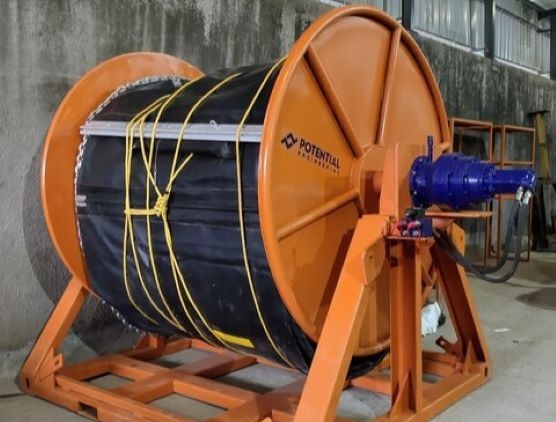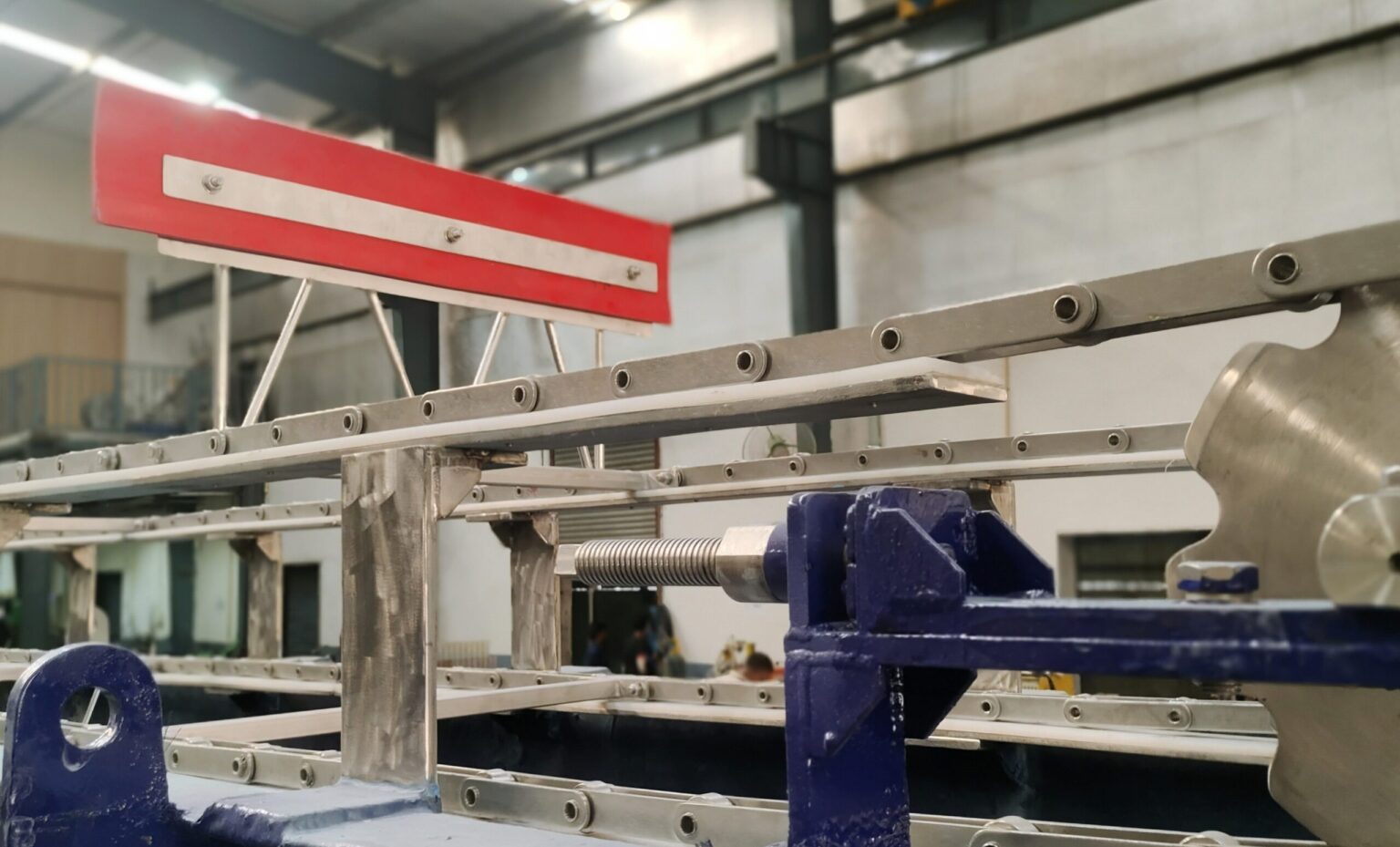Advances in Containment Boom Materials: Enhancing Oil Spill Response

Oil spills pose significant environmental and economic threats, making rapid and effective containment crucial. Oil containment booms are one of the primary tools in managing spills, acting as floating barriers that prevent the spread of oil on water surfaces. By corralling the oil, booms help minimize the damage to marine ecosystems, protect coastlines, and facilitate the recovery of spilled oil.
Oil containment booms are typically made from materials like polyurethane, PVC (polyvinyl chloride)- coated fabrics, or rubber-coated fabrics. These materials are chosen for their initial buoyancy and oil resistance, although they can degrade over time when exposed to harsh environmental conditions, such as UV radiation, salt water, and prolonged oil contact.
The effectiveness of containment booms is pivotal in reducing the overall impact of oil spills, highlighting the need for continuous advancements in their design and functionality to address the challenges faced by traditional booms, which include:
- • Limited durability
- • Susceptibility to harsh weather
- • Manual deployment and recovery
- • Buoyancy loss, overtime
- • Limited effectiveness in high currents
- • Maintenance challenges
- • Storage and transport issues
- • Environmental impact
Addressing these shortcomings has led to more advanced booms with improved materials, deployment systems, and technology integration. Here are some of the advancements in the materials used for containment booms which have significantly enhanced their durability, effectiveness, and adaptability to various environmental conditions. Key material advancements include:
- 1. High-Density Polyethylene (HDPE)
- • Chemical and UV Resistance: HDPE offers superior resistance to chemicals, oil, and UV radiation, making the booms more durable in harsh environments.
- • Flexibility and Strength: This material combines flexibility with high tensile strength, allowing booms to withstand rough conditions without tearing or deforming.
- 2. Reinforced Fabrics
- • Strength and Puncture Resistance: Modern booms use reinforced synthetic fabrics, which enhance their strength and resistance to punctures and abrasions, providing better containment performance.
- • Multi-layered Structures: Some booms now feature multi-layered fabric designs that add extra protection and longevity.
- 3. Marine-Grade Metals
- • Marine-grade Coated Steel and Aluminium: These metals are used for structural components offering excellent corrosion resistance, especially in saltwater environments.
- • Stainless Steel: Stainless steel is incorporated in areas requiring extra durability and strength, particularly in high-stress parts of the boom.
- 4. Elastomer Coatings
- • Enhanced Flexibility and Oil Resistance: Elastomer coatings, such as polyurethane, provide booms with improved flexibility and excellent oil resistance, which helps maintain their integrity over time.
- • Abrasion Resistance: These coatings also increase the booms’ resistance to wear and tear from rough waters and debris.
- 5. Composite Materials
- • Hybrid Combinations: Combining different elements like polymers and metals, enhances the overall strength, flexibility, and durability of the booms, making them suitable for various deployment conditions.
These advancements ensure that modern containment booms are more robust, longer-lasting, and better equipped to handle the challenges of oil spill containment in diverse environments. Building on this progress, continuous innovation has led to the development of emerging materials that are revolutionizing oil spill containment, including:
- 1. Graphene-Based Materials
- • High Absorption Capacity: Graphene and its derivatives have an exceptional ability to absorb oil while repelling water, making them highly effective for oil spill cleanup.
- • Durability and Reusability: These materials are strong, lightweight, and can be reused multiple times, reducing waste and costs.
- 2. Nanomaterials
- • Nanocellulose: Derived from plant fibers, nanocellulose is highly absorbent and biodegradable, making it an eco-friendly option for oil spill containment.
- • Functionalized Nanoparticles: These nanoparticles can be engineered to target and bind specifically to oil molecules, enhancing cleanup efficiency.
- 3. Aerogels
- • Lightweight and Porous: Aerogels, particularly those made from silica or carbon, have a high surface area and porosity, enabling them to absorb large amounts of oil relative to their weight.
- • Hydrophobic Properties: Their hydrophobic nature makes them ideal for separating oil from water.
- 4. Super-hydrophobic and Super-oleophilic Materials
- • Selective Absorption: These materials repel water but attract oil, making them perfect for selectively absorbing oil from water surfaces.
- • Coated Fabrics and Sponges: Innovations in coatings have led to fabrics and sponges that exhibit superhydrophobic and super-oleophilic properties, enhancing their utility in oil spill containment.
- 5. Biodegradable Polymers
- • Environmental Friendliness: Polymers such as polylactic acid (PLA) are biodegradable. Booms or pads made of PLA can break down naturally after use, reducing environmental impact.
- • High Absorption Rates: These polymers can be engineered to absorb oil effectively while maintaining structural integrity.
- 6. Self-Healing Polymers
- • Automatic Damage Repair: These materials can automatically repair small punctures or tears, extending the life of containment equipment and reducing the need for frequent replacements.
In the face of increasing environmental challenges and the need for rapid response to oil spills, the continuous advancement of containment boom technology is essential. By integrating improved materials and innovative designs, modern booms are becoming more durable, efficient, and adaptable to various conditions. From the use of reinforced fabrics and marine-grade metals to the development of cutting-edge materials like graphene and nanomaterials, these advancements not only improve containment performance but also reduce the environmental impact of cleanup operations. As technology continues to evolve, the effectiveness of oil spill response strategies will be further enhanced, ensuring better protection for our marine ecosystems.
Frequently Asked Questions (FAQs)
Q.1 How is the effectiveness of an oil spill response measured after using recovery equipment?
A. The effectiveness of an oil spill response is measured by recovery rate, oil-to-water ratio, environmental impact, and efficiency of the oil spill recovery equipment used.
Q.2 What role do research and development play in improving oil spill dispersant formulations?
A. Research and development enhance oil spill dispersant formulations by optimizing efficiency, reducing environmental impact, improving biodegradability, and ensuring effectiveness across varying conditions like temperature and oil types.





